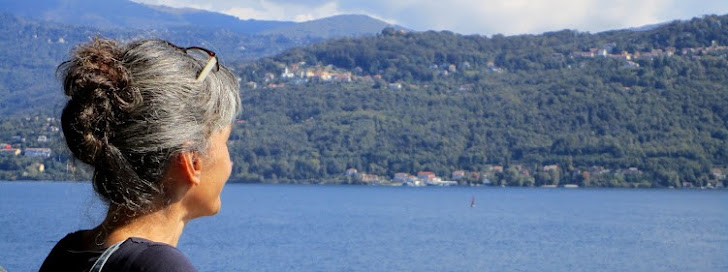"Achieving transformative change requires that the fundamental drivers of overconsumption are addressed, through changes in personal values, norms, economic and social operating rules, technologies and regulations. Given the interconnected nature of climate change, loss of biodiversity, land degradation, and air and water pollution, it is essential that these problems are tackled together urgently." (p. 107) United Nations Environment Programme (2021). Making Peace with Nature: A scientific blueprint to tackle the climate, biodiversity and pollution emergencies.

"More than conversation at the interface, it is creative assemblages like these that explore and elaborate the particular dynamic capacities that digital media afford and the ways that through them humans and machines can perform interesting new effects (...) in uniquely particular ways." Lucy Suchman (2009). Human-machine reconfigurations: plans and situated actions.
Showing posts with label interconnections. Show all posts
Showing posts with label interconnections. Show all posts
Mar 2, 2021
March
by
Monica Pinheiro
0
comments
 Labels:
biodiversity,
climate change,
interconnections,
Nature,
report,
United Nations
Labels:
biodiversity,
climate change,
interconnections,
Nature,
report,
United Nations
May 24, 2020
May
“Growing our connections to nature will allow us to push past mere intellect to embrace sensory experiences, emotions, intuition. (…) For the first time, a large body of research is illuminating the fact that our world arises from a sprawling, highly dynamic set of rhythms and relationships. (…) An especially intriguing aspect of this scientific shift – of this effort to break science out of the intellectual boxes we built for it – is the effort by some to merge traditional science with indigenous wisdom.” Gary Ferguson, 2019. Eight Master Lessons of Nature. Image by Monica Pinheiro, license CC BY-NC-SA (CC).
by
Monica Pinheiro
0
comments
 Labels:
bloom,
blue jacaranda,
books,
flourisher,
gardens,
interconnections,
jacaranda,
Jacaranda mimosifolia,
Lisbon,
May,
Nature,
science,
sensory experience,
shifting
Labels:
bloom,
blue jacaranda,
books,
flourisher,
gardens,
interconnections,
jacaranda,
Jacaranda mimosifolia,
Lisbon,
May,
Nature,
science,
sensory experience,
shifting
Aug 10, 2018
August
"Mycorrhizal networks (also known as common mycorrhizal networks or CMN) are underground hyphal networks created by mycorrhizal fungi that connect individual plants together and transfer water, carbon, nitrogen, and other nutrients and minerals. The formation of these networks is context dependent, and can be influenced by factors such as soil fertility, resource availability, host or myco-symbiont genotype, disturbance and seasonal variation." Image by Monica Pinheiro, license CC BY-NC-SA (CC)
by
Monica Pinheiro
0
comments
 Labels:
context dependency,
define,
distribution systems,
forest,
fungi,
interconnections,
mycorrhizal networks,
Plants
Labels:
context dependency,
define,
distribution systems,
forest,
fungi,
interconnections,
mycorrhizal networks,
Plants
Mar 17, 2009
artifacts interconnections with personal life

Jung et al (*)
Elaboration on the construction of a framework for (digital) artifact ecology in order to elicit the interconnections that take place among multiple artifacts. They do not mention any non-digital artifacts, such as notebooks, diaries, scrapings and their place in the artifact ecology. So this ecology should be considered as «digital artifact ecology».
For my study it's as much important to understand the «digital artifacts» as it is importante to understand «non-digital artifacts» and their inter-relations and interconnections, specially when we are facing the re-creations of the «office on the go». Understanding «why» mobile workers choose to use «non-digital artifacts» might bring better ideas for (new/better) digital artifacts, then understanding «why» they use «digital artifacts».
(*) Jung, H., Stolterman, E., Ryan, W., Thompson, T., and Siegel, M. (2008). Toward a framework for ecologies of artifacts: how are digital artifacts interconnected within a personal life?. In Proceedings of the 5th Nordic Conference on Human-Computer interaction: Building Bridges (Lund, Sweden, October 20 - 22, 2008). NordiCHI '08, vol. 358. ACM, New York, NY, 201-210.
(*) Jung, H., Stolterman, E., Ryan, W., Thompson, T., and Siegel, M. (2008). Toward a framework for ecologies of artifacts: how are digital artifacts interconnected within a personal life?. In Proceedings of the 5th Nordic Conference on Human-Computer interaction: Building Bridges (Lund, Sweden, October 20 - 22, 2008). NordiCHI '08, vol. 358. ACM, New York, NY, 201-210.
Subscribe to:
Comments (Atom)

.jpg)
